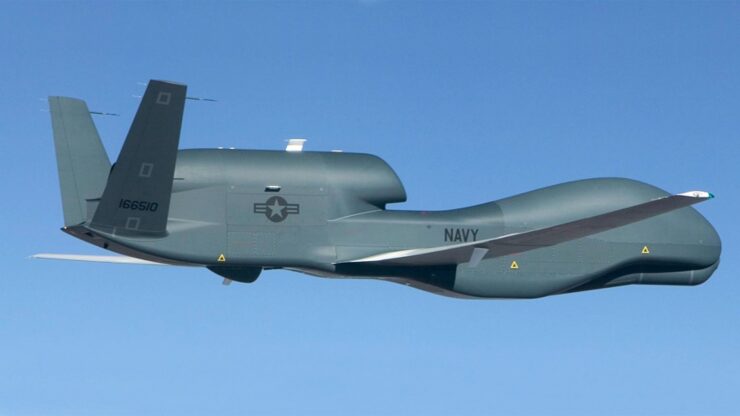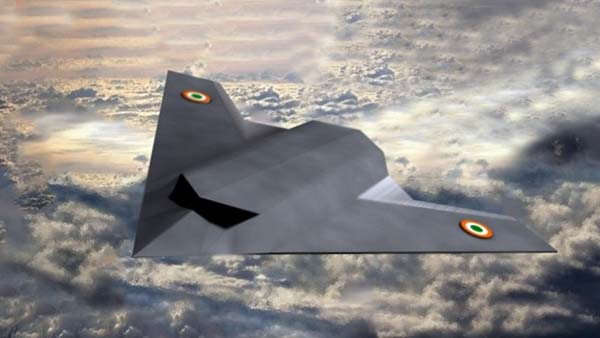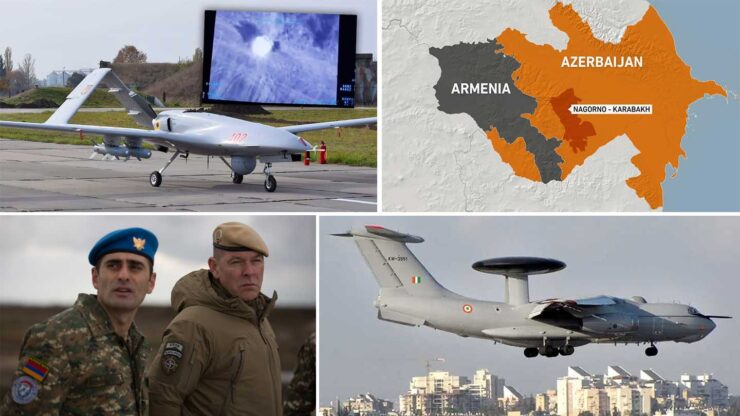Place: Ukraine / Time: July 2014
Two large mechanised brigades and an air mobile brigade of the Ukrainian Army assembled near the town Zelenopillya near the Russian border. Together they possessed hundreds of soldiers, tanks, infantry combat vehicles, engineering vehicles and trucks. While this powerful formation was assembling, it was spotted by Russian drones. On the morning of July 11, Russian forces hacked the Ukrainian command post’s network and jammed its radios.
US Army major Amos Fox narrates what happened in the winter 2019 edition of Armor, the official magazine of the US Army’s tank branch: “At about 4:30 A.M., the Ukrainians lost the ability to communicate due to Russian cyber and electronic attack. The formations, prostrate and unable to communicate, were then ruthlessly attacked by Russian multiple-launch rockets and run-of-the-mill tube artillery.”
According to Fox, “The attack crippled the assembled Ukrainian brigades.” Two battalions worth of vehicles and equipment burned. The Ukrainians admit 30 soldiers died along with six border guards and their commander, but the real figure is likely to be in the hundreds. Within days Ukraine called off the invasion.
Place: Nagorno-Karabakh, Armenia / Time: September-November 2020
The 30-year-old conflict between Armenia and Azerbaijan over the disputed Nagorno-Karabakh region escalated in late 2020, with both sides using missiles and rocket artillery guided by drones. A report by the Center for Strategic & International Studies says it was Azerbaijani superiority in the skies that tilted the scales in its favour.
“Azerbaijani drones provided significant advantages in ISR as well as long-range strike capabilities. They enabled Azerbaijani forces to find, fix, track and kill targets with precise strikes far beyond the front lines. UAVs were operationally integrated with fire from manned aircraft and land-based artillery but also frequently used their own ordinance to destroy various high-value military assets. Open-source reporting suggests that drones contributed to disabling a huge number of Armenian tanks, fighting vehicles, artillery units and air defenses. Their penetration of Nagorno-Karabakh’s deep rear also weakened Armenian supply lines and logistics, facilitating later Azerbaijani success in battle.”
Place: Afghanistan / Time: August 2021
The Taliban used a mix of commercially available UAVs and Chinese military drones to attack the Afghan government forces as well as Northern Alliance troops in its victorious march towards Kabul. The terrorist group’s drone unit acquired a $ 60,000 drone from China and modified it as a hunter killer. According to a report in the US-based New Lines Magazine, “The chemical tanks and hoses for carrying and spraying fertilizer and pesticides were removed and replaced with a makeshift plastic missile rack capable of holding four mortar rounds that could be fired via a computer-activated spring mechanism.”
Changing nature of warfare
The above three conflicts have one factor in common – the rise of the drones. From being at the periphery of the battlefield, these unmanned and unsung aerial vehicles are now at the centre of it. The use of this new accessory provides important information and insights into how modern wars will employ the growing spectrum of drones alongside traditional weapons such as missiles and artillery.

In particular, Russia’s actions in Ukraine have revealed several innovations, most notably the employment of the semi-autonomous battalion tactical group, and a reconnaissance-strike model that tightly couples drones to strike assets, hastening the speed at which overwhelming firepower is available to support tactical commanders.
Despite these widely publicized battles, the Indian armed forces are showing characteristic hesitancy in fully embracing this new component of warfare.
On June 20, 2019 an American RQ-4 Global Hawk pilotless aircraft was shot down over the Persian Gulf by an Iranian S-300 missile defence system. This was a significant development because until then the US had enjoyed uncontested aerial supremacy in the Middle East. The introduction of the Russian built missile defence system seems to have complicated the strategy of US war planners. Iran’s rare success has led to some red faces in the Pentagon, but there is no doubt the Americans will work out ways to defeat this new missile threat.
A major impact of the incident was in India where the military had second thoughts about the necessity of spending megabucks on high-altitude, long-endurance drones. India’s three services had planned to buy as many as 30 drones from the US at a cost of $ 6 billion. The plans were for the Indian Air Force and the Indian Army to each acquire 10 Predator-B hunter killer UAVs and the navy to buy long-distance surveillance versions. In May 2018, the Donald Trump administration had greenlighted the supply of drones to India.
According to the military brass, the IAF internally raised questions about an armed drone surviving in a contested airspace like over Pakistan-Occupied Kashmir (POK) or along the disputed border between India and China — with both adversaries having relatively modern air defence weapons, including surface-to-air missiles (SAM).
Shortsighted move
India’s armed forces have shown a tendency to play safe rather than showing exemplary vision. For instance, in the 1970s the IAF rejected a proposal to have a supersonic bomber fleet with the argument that the distance from India to Pakistan wasn’t sufficient for such an aircraft to achieve cruising altitude over Pakistan. Such follies must not be repeated.
If vulnerability and costs are the chief reasons for the three services pulling back from their commitment to high-performance drones, then such fears are misplaced.
Firstly, the real advantage of unmanned aerial systems is they allow you to project power without projecting vulnerability. Perhaps the Reaper that went down over the Persian Gulf was the shield that prevented a piloted F-18 or F-35 from being targeted. Similarly, in an India-Pakistan battle scenario, the presence of high altitude drones over Pakistan will show up as significant blips on the enemy’s radars, complicating his defences and manoeuvres.
Unlike the US, which operates drones in sanitised airspace, India will not have such luxury over Pakistan. Therefore, the key is to use drone innovatively. Sending in advanced drones into Pakistan only during wartime would be well worth the investment. Peacetime intrusions will also yield multiple gains. For instance, a high altitude drone entering Pakistani airspace will set off the enemy’s air defence systems, allowing the drone and Indian observation satellites and AWACS planes to sniff out Pakistani frequencies and detect gaps in their radar coverage. This is the reason why the US and Russia send in drones over the adversary’s airspace.
In fact, the Global Hawk that the Iranians shot down may have scooped up data on the radar profile of the much feared S-300 system and the reaction time of its missile. So, by shooting down the drone, the Iranians may have inadvertently compromised their own system. Without the drone, the Americans may have been able to get the same intelligence only by risking a pilot’s life. The bonus for the Americans is that when they do decide to launch strikes on Iran, they’ll know exactly how to take out the S-300.
The takeaway for India is that the more variety of forces you are able to throw at the enemy, the more likelihood he will get unhinged.
Wingman strategy
While drones have been successfully deployed as intelligence gatherers and hunters, the latest strategy is to have wingman drones that accompany fighter aircraft into the battlefield. Controlled by manned fighter jets, wingman drones can potentially act as their capability amplifiers by, for example, carrying extra weapons, gathering battlefield information and expanding the fighter pilots’ situational awareness.
It was believed that wingman drones would only become a reality for the upcoming sixth-generation fighter jets, but developments in the US and Russia suggest they could be reality a lot earlier. Defence Blog says the US Air Force is set to purchase 20 to 40 XQ-58 Valkyrie stealth drones by the end of 2019. The Valkyrie could fly with US manned fighter jets, including the F-35 and F-15EX, which could function as flight leads for the drones.
Meanwhile, in August 2019, Russia released footage of the S-70 Okhotnik stealth assault drone which is designed to be paired with the Su-57 fighter jet for joint missions.
The Sky Hawk built by China Aerospace Science and Industry Corporation, the CH-7 of China Aerospace Science and Technology Corporation and the Sharp Sword of AVIC are also stealth drones. If a data link and control system can be developed between these drones and manned warplanes, they could become wingmen drones, according to a Chinese expert.
Cost-effective air combat
Another key reason behind the Indian rethink is the prohibitive price of armed drones like the Predator-B. According to the military establishment, the cost of a bare drone platform will be to the tune of $ 100 million and a full complement of weapons like laser-guided bombs or Hellfire missiles will cost another $ 100 million.
“This means that an armed drone with a full complement of weapons will be more expensive than the Rafale multi-role fighter with all weapons and missiles on board. Under the circumstances, the IAF will give preference to acquiring more multi-role fighters with long-range air-to-air missiles and the Indian army will be looking towards replacing its dated T-72 tanks. The Indian Navy needs more surface combatants at sea rather than an armed drone for projecting itself as an Indo-Pacific power,” a senior Defence Ministry official told the Hindustan Times.
The apparent high cost is a convenient bogey that seems to spook various stakeholders. In reality, it is a classic case of penny wise and pound foolish. According to Todd Harrison of the Washington DC-based Center for Strategic and Budgetary Assessments, remotely piloted aircraft cost less over the long run. He explains: “To be clear, the aircraft themselves do not necessarily cost less, and in some cases they may actually cost more per plane to build and more per flying hour to operate than the equivalent manned aircraft. The savings come from not having to fly them as often for training missions. Fighter pilots need to be in the air to stay at peak readiness because flying a fighter jet is like ‘simultaneously playing the piccolo, driving a formula-one race car, and bench pressing 200 pounds’. Remotely piloted aircraft, in contrast, don’t need to be in the air to maintain pilot skills – simulator training is a realistic substitute for actual operations.”
Future is unmanned
There is no doubt that drones are the future of aerial warfare. In 2009, for the first time the US trained more pilots for unmanned aircraft than for manned aircraft. According to the US military’s official magazine Stars & Stripes, the Air Force is pulling jet fighters from the flight lines by the hundreds and replacing them with Predators, Reapers and Global Hawks, all piloted from cockpits bolted firmly to the ground. “As a result, more and more of war is being waged from home — thousands of miles from the snap of gunfire, shock waves and shrapnel.”
It is not hard to imagine that within another decade unmanned aircraft operations will dominate day-to-day air force operations, force planning decisions and budgets.
Remotely piloted aircraft can match or exceed manned aircraft in many of the performance attributes of increasing importance for modern fighter jets, particularly when it comes to endurance. Manned fighters are limited in how long they can stay in the air not by fuel (since they can be refuelled in the air) but by how long the pilot can stay strapped into an ejection seat. And since remotely piloted aircraft can be refuelled in the air, unmanned aircraft can stay in the air (and in the fight) until they run out of lubricants or need maintenance.
Investment in highly capable and expensive new weapons systems is based on specific assumptions about the future. Completely shunning a proven weapons platform can be counterproductive. During the 1999 Kargil War, India had to buy laser bomb sights in order to target Pakistani positions in the mountains. These had to be imported from Israel on an emergency basis. Many lives could have been saved had this equipment been acquired during peacetime and used from day one of the war rather than several weeks later. What’s more, emergency purchases always cost a premium so it’s a sound strategy to buy weapons system before the fighting begins.
Rather than investing everything in more warplanes, tanks and warships, it makes sense to augment them with systems that will act as force multipliers. Along with the air force, navy, army and the space forces, the pilotless aircraft force is set to be the fifth critical arm of warfare. With the US, Russia and China fine-tuning their drone warfare strategies, it doesn’t reflect well on the Indian military if it fights tomorrow’s wars with yesteryear tactics and technologies.
DRONE MANUFACTURE IN INDIA
 Until 2016, India’s R&D efforts had suffered because of restrictions imposed by the Missile Technology Control Regime, which considers the military UAV as a strategic weapon. With India now a member of this cartel – as well as the Wassenaar Arrangement – it has better access to the latest technologies. This is resulting in a number of joint ventures with foreign partners.
Until 2016, India’s R&D efforts had suffered because of restrictions imposed by the Missile Technology Control Regime, which considers the military UAV as a strategic weapon. With India now a member of this cartel – as well as the Wassenaar Arrangement – it has better access to the latest technologies. This is resulting in a number of joint ventures with foreign partners.
The DRDO’s Aeronautical Development Establishment (ADE) based in Bengaluru has acquired and developed capabilities in designing complex systems and sub-systems involved in making a fighter aircraft. The ADE has also developed its own flight control systems, avionics and digital flight computers. The same agency is developing the next generation of drones, and these modern technologies will certainly give a boost to India’s UAV fleet.
Saurav Jha, an energy and security commentator, writes in The Diplomat that until the Indian military can put up a large enough constellation of military communication satellites, armed drone operations will be somewhat limited in scope and tempo. According to him, “In some ways the stage is being set for the indigenous UCAV program that is currently focused on developing a sufficiently stealthy platform, release of weapons from an internal weapons bay, and materials for all-aspect stealth. The first flight of this UCAV is expected to take place in the early 2020s. By that time, the support elements required to exploit such a system are likely to have matured in India.”
–The writer is a globally cited defence analyst. His work has been published by leading think tanks, and quoted extensively in books on diplomacy, counter terrorism, warfare and economic development. The views expressed are personal and do not necessarily reflect the views of Raksha Anirveda












